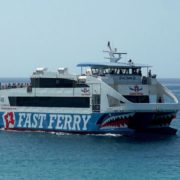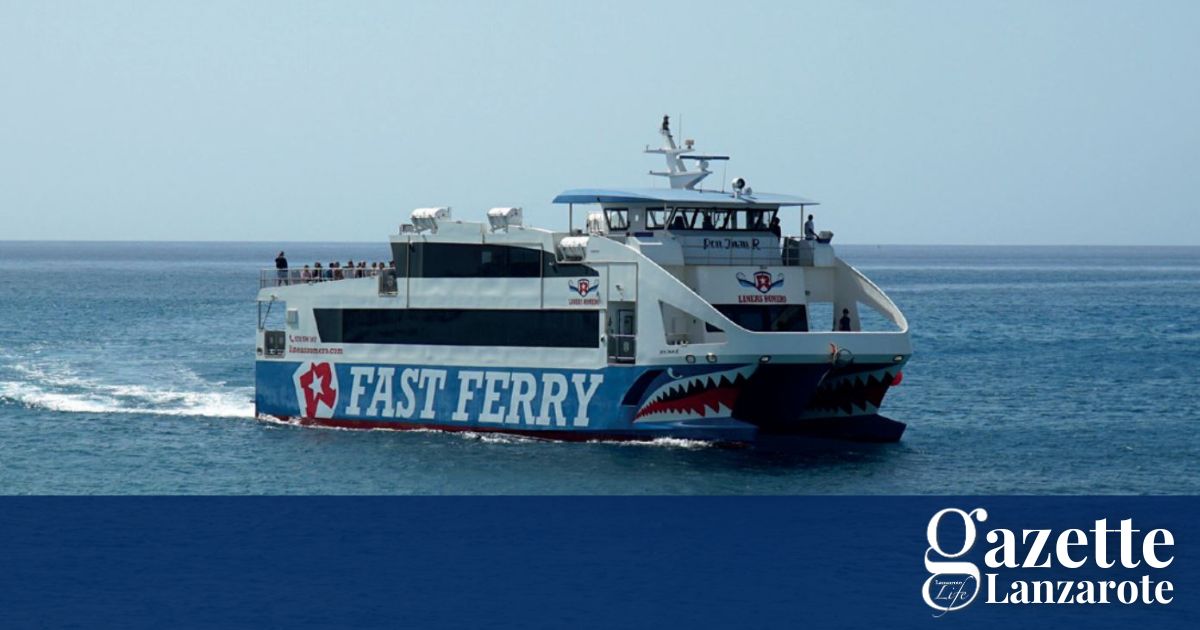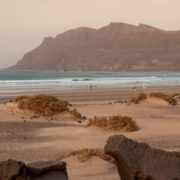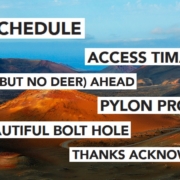Melquiades Romero is a captain on the boats which ferry passengers from Lanzarote to La Graciosa and back five times every day. He’s a Graciosero born and bred, and a skipper for the Lineas Romero company that has connected the islands for over fifty years. We spoke to him.
On each journey there is a crew of five, the captain, his mate and three sailors. Their job is to navigate the occasionally tricky waters off the north coast of the island, moor the ferry and look after many of the 500,000 passengers that head to La Graciosa each year.
The voyage is a 7-kilometre, S-shaped loop from Órzola around Lanzarote’s northern tip, the Punta de Fariones, into the strait of El Río and up again to Caleta de Sebo. It’s a more complicated voyage than the relatively sheltered crossing to Fuerteventura from Playa Blanca in the south, and while the ferries often have calm journeys, it’s also likely that there’ll be some choppy moments.
Earlier this year, the ferries were suspended for a day owing to rough sea conditions. Melquiades says this usually occurs a few times a year and explains that this is because the boat is heading directly into the wind on leaving Órzola. The prevailing wind on Lanzarote is a northern alisio, and it comes straight down from the Atlantic, with the winter months often seeing rough conditions, but with high winds in July and August, too.
When waves reach two metres, things get pretty rough, but the ferry can continue to operate safely in seas of up to four metres in height.
Above that, voyages are usually cancelled. Passengers are well looked after and Melquiades says, “seasickness really isn’t much of a problem”.
There have been some complaints recently that La Graciosa is suffering from too much tourism, but Melquiades says it isn’t La Graciosa’s problem. “When more tourists come to Lanzarote, more people want to visit La Graciosa,” he says. His job is to take them there.
After several years at sea, Melquiades is still happy in his job. “I feel more nervous when I’m not at sea, or when I’m away from it visiting places like Madrid. At sea I never feel alone. For me, it’s freedom.”
Oh The High Seas
While the immense majority of tourists and visitors now arrive on the island by air, Lanzarote is still very much a maritime island, with connections to the other Canary Islands as well as the Spanish mainland.
The island has four main ports, of which Arrecife is by far the most important. This is the starting point for trips to four other Canary Islands – Fuerteventura, Tenerife, Gran Canaria and La Palma, as well as longer voyages to Cadiz and Huelva on the Spanish mainland. It’s also currently the island’s only cruise port.
In the south, the newly extended Playa Blanca harbour sees several daily departures to Correlejo on Fuerteventura, another hugely popular day-trip. A popular holiday resort, Corralejo still maintain much of its original charm as a fishing village.
In the north, Órzola is connected with the “eighth Canary Island” of La Graciosa several times a day – a chance to see a beautiful unspoiled island with no tarmac roads and some stunning beaches.
Líneas Romero also run the water taxi service connecting Puerto del Carmen with the leisure marina of Puerto Calero, just down the coast. It’s a popular day trip, which many holiday makers often combine with a lovely clifftop walk.
If, of course, you’re interested in chartering private voyages, then there are many more options, with the leisure marinas at Arrecife, Puerto Calero and Marina Rubicón in Playa Blanca chief among them.











Leave a Reply
Want to join the discussion?Feel free to contribute!